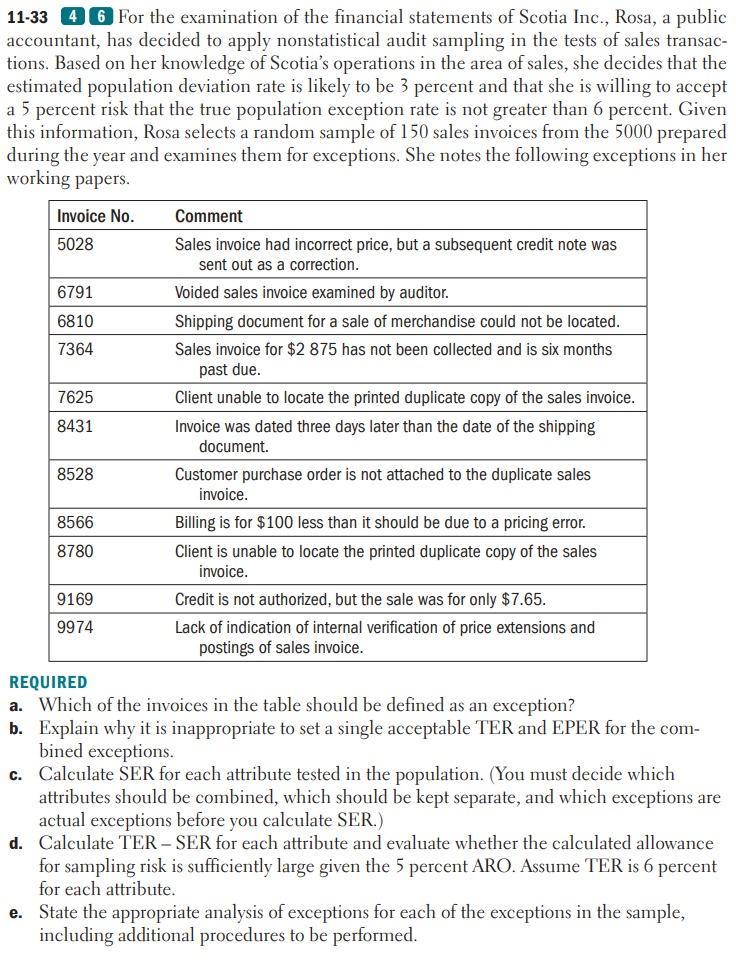Auditing
Please do only the C,D, and E question

11-33 4 6 For the examination of the financial statements of Scotia Inc., Rosa, a public accountant, has decided to apply nonstatistical audit sampling in the tests of sales transac- tions. Based on her knowledge of Scotia's operations in the area of sales, she decides that the estimated population deviation rate is likely to be 3 percent and that she is willing to accept a 5 percent risk that the true population exception rate is not greater than 6 percent. Given this information, Rosa selects a random sample of 150 sales invoices from the 5000 prepared during the year and examines them for exceptions. She notes the following exceptions in her working papers. Invoice No. Comment 5028 Sales invoice had incorrect price, but a subsequent credit note was sent out as a correction. 6791 Voided sales invoice examined by auditor. 6810 Shipping document for a sale of merchandise could not be located. 7364 Sales invoice for $2 875 has not been collected and is six months past due. 7625 Client unable to locate the printed duplicate copy of the sales invoice. 8431 Invoice was dated three days later than the date of the shipping document. 8528 Customer purchase order is not attached to the duplicate sales invoice. 8566 Billing is for $100 less than it should be due to a pricing error. 8780 Client is unable to locate the printed duplicate copy of the sales invoice. 9169 Credit is not authorized, but the sale was for only $7.65. 9974 Lack of indication of internal verification of price extensions and postings of sales invoice. REQUIRED a. Which of the invoices in the table should be defined as an exception? b. Explain why it is inappropriate to set a single acceptable TER and EPER for the com- bined exceptions. C. Calculate SER for each attribute tested in the population. (You must decide which attributes should be combined, which should be kept separate, and which exceptions are actual exceptions before you calculate SER.) d. Calculate TER - SER for each attribute and evaluate whether the calculated allowance for sampling risk is sufficiently large given the 5 percent ARO Assume TER is 6 percent for each attribute. e. State the appropriate analysis of exceptions for each of the exceptions in the sample, including additional procedures to be performed







